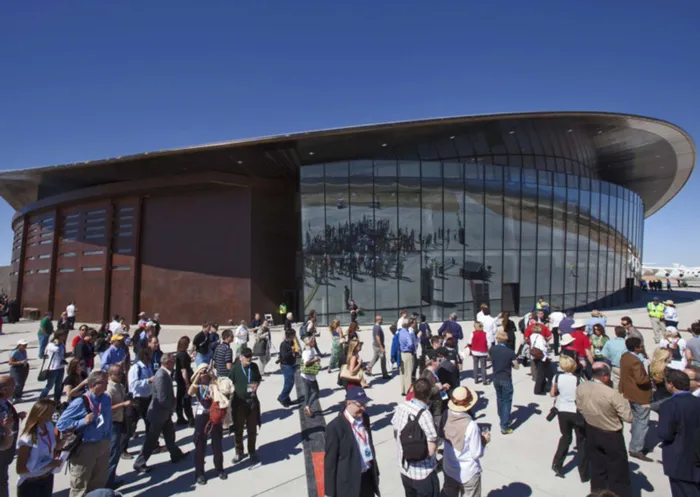What’s for dinner in space?

Guests stand outside the new Spaceport America hangar in Upham. British billionaire Richard Branson dedicated the newly completed terminal where his Virgin Galactic is slated to begin his commercial space tourism venture from the remote patch of desert in Sierra County. Guests stand outside the new Spaceport America hangar in Upham. British billionaire Richard Branson dedicated the newly completed terminal where his Virgin Galactic is slated to begin his commercial space tourism venture from the remote patch of desert in Sierra County.
Eating in space a notoriously difficult problem - not only is it hard to get the food into astronauts' mouths in the first place, but the sense of taste is severely limited at zero gravity.
Traditionally then, astronauts have had to make do with foil-packed and dehydrated goods that do little to tickle the taste buds.
Of course, astronauts are in space to work, so they can't complain too much. Space tourists, on the other hand, are likely to be fussier customers. So what might they expect?
At this year's National Science and Engineering Week in the UK, artistic food designers The Robin Collective joined forces with space nutrition specialist Brian Ratcliffe from Robert Gordon University in Aberdeen, Scotland, and astronaut Helen Sharman, who was the first Briton in space.
Their challenge was to see if they could overcome some of the culinary obstacles that dining in orbit, or on a really long space mission, would present.
First up was Cosmic Cocktail which turned out to be a spirulina caipirinha. Spirulina is a microalgae normally available in health shops.
When jazzed up as a Brazilian cocktail, though, it tasted surprisingly delicious.
Astronauts don't drink alcohol in space, but space tourists are surely going to want to let their hair down on the trip, especially if it takes years to reach their destination. Packed with protein, micronutrients, and antioxidants a spirulina caipirinha could be just the ticket.
The dehydrated Mars Breakfast Bar the team served up promises to deliver all the flavour of a full English breakfast in a few bites.
Concentrating flavours into tiny packages isn't only down to the need to pack light, there is very little to cook with in space.
For a start, there's no convection - heat doesn't rise - so traditional cooking methods are very limited. The now popular culinary technique of freeze-drying was first developed by Nasa, and has become essential to creating astronaut entrées
Less delicious though are the freeze-dried noodles that were supposed to taste like a roast dinner. And the Big Dipper Dab, freeze-dried raspberries and sherbet were also mouth-wincingly sour.
I suggest if planning that special trip, bring a packed lunch... - Belfast Telegraph